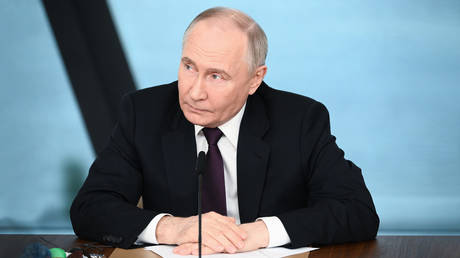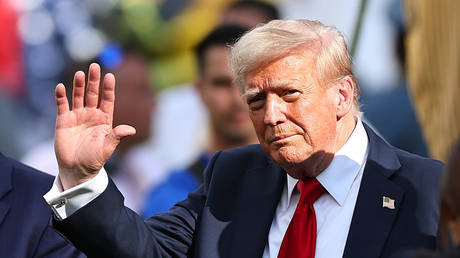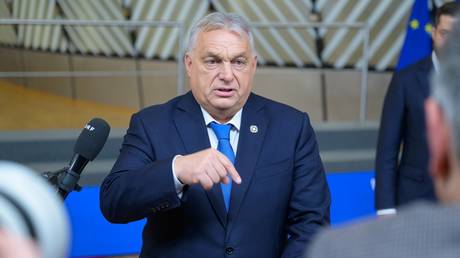
NATO is trying to shift the Ukraine conflict into Russia, and the lack of a response will be seen as a sign of weakness
On May 31, US Secretary of State Antony Blinken announced the Biden administration’s decision to allow Ukraine to use Western weapons to hit targets in what Washington considers Russian territory.
This week, Russian President Vladimir Putin reiterated his country’s red lines in this regard, promising an “asymmetric response,” without providing specific details.
President Biden stopped Ukraine from using ballistic missiles. The attack will also be restricted to the Kharkov sector — allowing Kiev “to strike military targets, gun positions, as well as transshipment bases that Russia uses to create a kind of buffer zone,” as a White House official put it.
But as Americans often say, all options are on the table. Blinken succinctly stated on the sidelines of a meeting of NATO foreign ministers in Prague on May 31, “The hallmark of our engagement has been to adapt and adjust as necessary, to meet what’s actually going on on the battlefield, to make sure that Ukraine has what it needs, when it needs it, to do that deliberately and effectively. And that’s exactly what we’re doing in response to what we’ve now seen in and around the Kharkov region.”
The key words are — “adapt and adjust as necessary.” They message that this isn’t a “stand alone” decision, but part of a process; nor is it limited for all time in geographical terms to Kharkov Region’s border with Russia.
Blinken ignored the Kremlin’s warnings but unmistakably hinted that this was just the beginning. The underlying logic is to keep increasing the costs for Russia as a potential deterrence to force it to bend when costs outweigh the benefits.
Washington is pleased that more and more NATO countries are speaking out in favor of officially allowing Ukraine to strike with its weapons on Russian territory. Notably, on May 31, Germany confirmed the possibility that its weapons could be used near Kharkov region.
Washington seems confident that Moscow, as so often in the past, will get to accept the “new normal.” Nonetheless, Blinken underscored that “Going forward, we’ll continue to do what we’ve been doing, which is, as necessary, adapt and adjust. And that, as I said, has been a hallmark of our engagement; it will continue to be.”
So it is entirely conceivable that at a future date sooner rather than later, ATACMS may be included in Kiev’s inventory to hit Russian territory, especially if the Russian offensive expands in scope.
Jeremy Bowen, a BBC International television presenter, wrote this week after a trip to Ukraine that most Western analysts think the Kremlin is bluffing when it rattles the nuclear saber. “China, Russia’s essential ally, has made it clear it does not want any use of nuclear weapons,” he argued. There is some merit in such an argument.
At any rate, Blinken simply ignored the sensitive issue of tactical nuclear weapons, but asserted that NATO will not be cowed. The US has a counter-strategy, which includes bilateral talks with Ukraine in the coming weeks to expedite long-term security arrangements.
Plans are also afoot to take “concrete steps” at the forthcoming NATO summit in Washington in July “to bring Ukraine closer to NATO and ensure that there’s a bridge to membership, a bridge that’s strong and well-lit.” Blinken stressed that NATO will have a key role to build Ukraine’s future force and the Washington summit will advance the country’s integration into the alliance. Biden, however, later said in an interview that NATO membership for Ukraine is not necessarily a part of his vision for ‘peace’.
Speaking to the press on Monday, White House national security spokesman John Kirby disclosed that Washington has so far only given Kiev permission to use American weapons to hit targets in the part of Russia bordering Ukraine’s Kharkov Region, but won’t rule out the further loosening of restrictions and expanding the geography of such cross-border strikes.
Kirby was up front that while the policy, with respect to prohibiting the use of ATACMS, or long-range strikes, inside of Russia has not changed, he wouldn’t rule out “any additional policy changes,” which will depend on the battlefield situation and “where things go and what the Ukrainians need.”
“We’re not going to turn our back on what Ukraine needs. And we’re going to continue to try to, again, evolve our support to them as the battlefield evolves as well,” Kirby said. Plainly put, if Russian operations intensify or expand in scope — or, ironically, meet with success — all bets are off. From Kirby’s remarks, it seems Biden may have taken a decision already in this regard.
All things taken into consideration, the US has thrown down the gauntlet to Moscow. It has completely fudged the core issue, namely, that highly skilled NATO specialists are doing the target selection for Kiev, which, in turn, will be drawing upon the alliance’s pool of reconnaissance data, and, secondly, the attack on Russian territory may even be without the participation of the Ukrainian military. Simply put, there are no pretensions anymore about the NATO raring to take on Russia.
In response, Russian Deputy Foreign Minister Sergey Ryabkov has once again warned the US against miscalculations that could have fatal consequences and called on Washington to take Russian warnings with the utmost seriousness. But such reasoning will be falling on deaf ears.
In fact, French President Emmanuel Macron is expected to announce any day the deployment of French “military instructors” to Ukraine. France hopes to lead a European “coalition of the willing” in this regard. The US and NATO are not currently considering the option of sending military trainers to Ukraine, but are thinking about the possible role of coordination of training.
All in all, during the past ten days since NATO Secretary-General Jens Stoltenberg broke the ceiling in an interview with The Economist on May 25 — obviously, with Washington’s prior concurrence — that Ukraine should be allowed to use Western-supplied weapons in strikes against military targets inside Russia, and called on members to “consider whether they should lift” their current restrictions, there has been a spectacular display of the Western alliance wading deeper into the war.
What emerged on May 31 is Plan B to transfer the locus of the war to Russian territory. This poses a tough call for Moscow as its red lines have fallen by the wayside. Procrastination will be construed as weakness and may embolden NATO to further up the ante. This is an existential war and there is no alternative to Russia pressing ahead with the creation of an effective buffer zone, no matter the costs.




